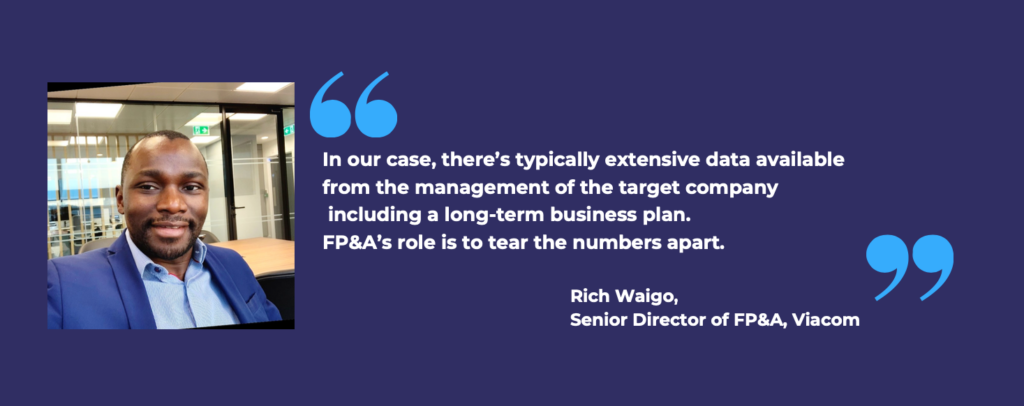
Financial planning and analysis (FP&A) supports an organization’s financial health. Most businesses consider the FP&A role in planning and budgeting, integrated financial planning, performance reporting, forecasting and modeling. However, in the past decade,FP&A has moved away from strict focus on budgeting and P&Ls, balance sheets, and month-end reporting, towards becoming stewards of “value creation”. The title of a highly shared article by Strategic Finance more than a decade ago introduced these finance leaders as “The FP&A Squad: Financial Agents for Change”. In other words FP&As are required to show businesses the money!
But how are FP&A professionals really achieving this promise of being an economic engine for their businesses and the wider economy?
There are great examples of this, as revealed by an economic study into the burgeoning FP&A role. Amazon’s high performing FP&A units were responsible for the birth of Amazon Prime, which today counts 200 million members. Other revenue-driven FP&A initiatives include manufacturing company Chemours whose FP&A team improved margins for industrial plants at the $6 billion company, while other companies including Lego and HP used real time data to drive revenue during COVID-19.
But as these 8 powerful stats reveal, the role of financial planning and analysis, though hugely important to businesses, still faces considerable challenges in delivering its full promise to businesses.
1. FP&A is the 13th fastest growing role in the United States
The role of FP&A is fast-growing wielding enormous potential. In fact, in 2022, LinkedIn announced the role is the thirteenth-fastest growing role in the United States. Overall, there are more than 78,000 FP&A positions in the United States, all in the value-creation business aiming to strategically lead businesses through smile such as scenario planning, modeling and analysis.These roles vary from FP&A Manager to Head of FP&A.
2. M&A work in FP&A may deliver six to seven figure returns
The increasing empowerment of FP&As in M&A work shows their impact. FP&A remit to assess business and financial assumptions can yield six to seven-figure returns. For instance, FP&As cassess business and financial assumptions and develop an EBITDA or discounted-cash-flow (DCF) valuation model within M&A strategies. Viacom, Senior Director of FP&A, Rich Waigo says: “In our case, there’s typically extensive data available from the management of the target company including a long-term business plan. FP&A’s role is to tear the numbers apart.” Ryan Simmermaker, VP Strategy and Business Development at Cincinnati, says: “FP&A can produce those sorts of proposals in terms of, say, doing an initial discount now on the value of the business, but paying it out as they start to generate value for us. This is just another example whereit is not uncommon for FP&A at a mid-market size company to generate returns in the six to seven figure range.”

BUT….
3. 96,000 Hours Per Year Wasted on Manual FP&A Tasks
Despite their great potential, 96,00 hours a year are wasted in FP&A departments blunting their impact. Datarails commissioned a report about the economic impact of the FP&A role. The study was undertaken with economist Roberto Cavazos, professor at the University of Baltimore Business School, and Mikhail B. Pevzner, Ph.D, Professor of Accounting, University of Baltimore. Looking across 839,8000 small to large companies in the US, the study finds a staggering 96,000 hours are wasted on manual tasks (roles which can be entirely automated). This is based on a conservative estimate of two hours per week of manual work by these professionals. Many do many more hours than this! Such manual tasks include 64% of time identifying and correcting errors, 63% manually updating reports and 60% manually collecting
and compiling data and 54% tracking multiple report versions.
4. FP&A Manual reporting overload costing US businesses $6.1 billion
Calculating the economic cost of this manual drain involves analysing the impact of two hours of Excel jockeying a week – the bare minimum in FP&A departments. This was then multiplied by the $80,000 annual salary of an FP&A professional for each sized company in the US. The economic analysis, based on composites of these 839,8000 small to large companies in the US, finds that these are set to cost US companies $6.1 billion by the end of 2022, broken down as follows
- US small companies (50-99 employees) losing $893 million in paying for manual FP&A tasks
- US small to medium-sized companies (100-249 employees) losing $415 million in paying for manual FP&A tasks
- US medium-sized companies (250-499 employees) losing $187.9 million paying for manual FP&A tasks
- Large companies (500-999) losing $241.1 billion paying for manual FP&A tasks
5. Businesses failing to achieve $1.7 billion FP&A value creation
Furthermore, $1.7 billion of economic uplift could be released if FP&A departments hit a conservative 0.1% revenue uplift for their businesses through projects directly linked to top line growth, the study finds. The analysis notes that 0.1% growth in revenues is a conservative return on investment. Christian Frantz Hansen, Director, Business Partnering Institute, adds: “I believe that in companies that are good at it, then FP&A is no longer a cost center but a profit center. It doesn’t make sense from a business perspective to have us if we don’t create value.”
6. Only 22% of FP&As actually undertake high value work
Sadly FP&As admit they are struggling to get to analysis with manual work overpowering their days. Some 55% of FP&A leaders want to be spending time on high value work while only 22% actually achieve this. The economic impact of this is real and is confirmed by numerous studies. More staggering, this percentage of boring manual work has been more or less the same for the last 10 years in the profession. This dulls potential for FP&A teams to deliver real economic growth and damages morale.
7. Only 47% of those in FP&A use digital technologies
With Excel processes the norm, only 47% of those in consolidated annual planning and budgeting use digital technologies. This Compares poorly with other parts of a business, where, for instance, 82% of top salespeople rely on automation and tech while 75% of marketing colleagues use automation tools.
8. Poor forecasts are knocking at least six percent off share prices
Forecasts built on manual data, are costing organizations. In enterprise companies this occurs frequently. Over a three-year period, only one percent of firms hit forecasts exactly, and just five 22 percent have come within five percent either way. This knocked six percent of their share prices over the same period, a significant part of which resulted from investor reaction. Kasthuri V. Henry: “As valuecentric stewards, FP&A professionals have an unwavering fiduciary responsibility to the company’s stakeholders that they should take seriously to ensure that success isn’t rendered optional when choosing between short-term profits and the creation of long-term value.”
For our full analysis of the Economic Impact of the FP&A role in the United States check out our free whitepaper.